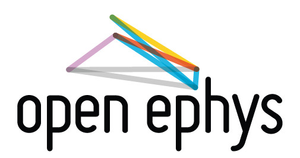We want to make this wiki the go-to source for all the information needed to build, use, and extend the tools created as part of the Open Ephys initiative. Everything from parts lists to troubleshooting tips will be fair game. We strive to make everything accessible to neuroscientists without any engineering or programming background, so don't hesitate to edit a page or add a comment if something seems unclear. We hope that everyone who uses our tools will contribute to this wiki!
If you're using our tools, please be patient. We are a team of volunteers who feel that neuroscientists are severely handicapped by the lack of an open-source platform for collecting electrophysiology data. We're working toward the point at which all of our knowledge has been dumped into this wiki, and using our tools is as frictionless as it would be if they were designed by professionals. But progress is often slower than we'd like it to be, since our scientific projects remain our top priority. We know our creations aren't perfect, but the great thing about open-source tools is that you can fix them yourself. If you encounter a problem, the best response would be to figure out what's going wrong, and learn about the tools in the process.
What is Open Ephys?
Open Ephys is a collaborative effort to develop open-source tools for extracellular electrophysiology with a level of quality that equals or surpasses their closed-source counterparts. Since the spring of 2011, our main focus has been on creating a multichannel data acquisition system optimized for recordings in freely behaving rodents. However, most of our tools are general enough for applications involving other model organisms and other electrode types.
What is this wiki for?
This wiki contains information contributed by the Open Ephys community, on how to use open-source tools for Neuroscience.
Important: This wiki is no longer used for documentation of tools sold through the Open Ephys store. Instead, please visit our documentation overview here. Pages on this wiki have been kept as an archive but may not contain up-to-date information.
Why open source?
We see three main advantages to using open-source tools in our research: (1) they are much, much less expensive, making it easier to scale up experiments; (2) they are easier to modify, giving us a degree of flexibility that can't be found in any of the available commercial systems; and (3) they make it easier to understand what's going on "under the hood," since all of the designs can be downloaded for free.
I have an issue with an Open Ephys tool
For documentation of tools developed by and with Open Ephys, please visit https://open-ephys.org/doc-overview.
We have a Google Group Forum, where your question may already have been answered!
If you get stuck, definitely let us know
. But we're optimistic that our hardware and software will really start to shine once more people start adding features and polishing what we already have.by contacting support [ at ] oeps.tech.
| Info | ||
|---|---|---|
| ||
To create a wiki account, please email info [at] open-ephys.org. We want anyone to be able to edit this wiki, but we experienced issues with spam when access was unrestricted. |
| Info | ||
|---|---|---|
| ||
For many pages, there's more content without an explicit link to it. |
Recent space activity
| Recent updates | ||||||||
|---|---|---|---|---|---|---|---|---|
|
Space contributors
| Contributors | ||||||||||
|---|---|---|---|---|---|---|---|---|---|---|
|
Wiki overview
| Page Tree | ||||
|---|---|---|---|---|
|

